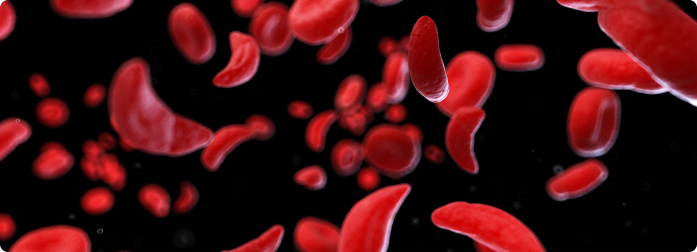Types of Sickle Cell Disease
Sickle Cell Anemia (SS)
There are two abnormal “sickle” genes for hemoglobin, one from each parent. This type is common in those of African and Indian descent. This is the most severe form of the disease and it carries the highest risk for early death due to infection or acute chest syndrome.
Sickle Hemoglobin-C Disease (SC)
There is one abnormal “sickle” gene and one abnormal “C” hemoglobin gene. This may cause similar symptoms to SS disease but will have less anemia. SC is common in West African, Mediterranean, and Middle Eastern populations.
Hemoglobin Beta-Plus Thalassemia (SB+)
There is one abnormal “sickle” gene and one beta plus thalassemia gene. There is some amount of normal hemoglobin created by the body and the symptoms are usually milder than SC or SS, but complications can still develop.
Hemoglobin Beta-Zero Thalassemia (SB 0)
There is one abnormal “sickle” gene and one abnormal beta zero gene. This presents with similar symptoms to SS disease and can also be referred to as sickle cell anemia.
Sickle Cell Trait (AS)
One abnormal “sickle” gene and one normal gene “A’. If you have this type, you may not exhibit symptoms except in stressful situations such as dehydration or strenuous exercise.
